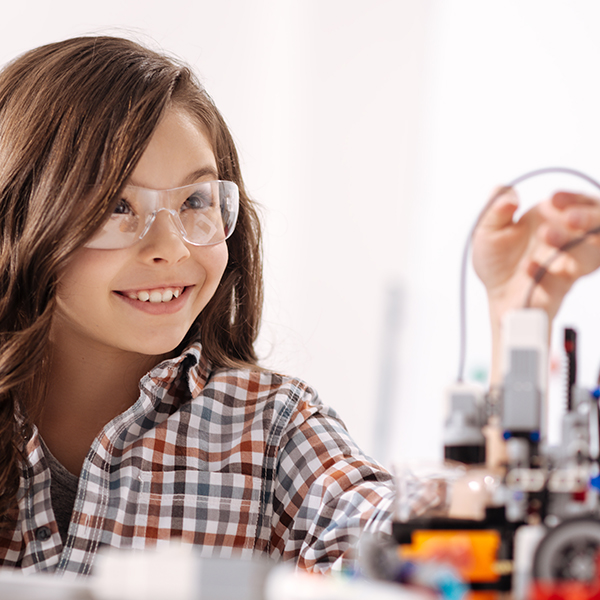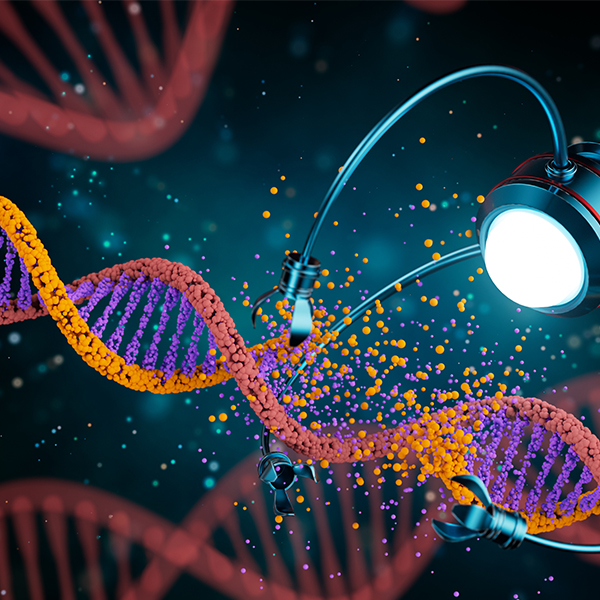How the Scientific Theory of Evolution Was Developed, and How and Why It Continues to Evolve
As All Good Scientific Theories Do
A Real World Application of the Scientific Method
For all the controversy surrounding evolution, you would be justified in thinking the theory of evolution stands on shaky ground as far as the scientific method goes. In fact, it was through standard, rigorous applications of the scientific method that scientists came to their current understanding of the evolutionary process. It is a great topic to use as an example of a real world application of the scientific method.
Science investigations begin with one or more questions about phenomena observed in the natural or physical world. The theory of evolution attempts to answer three basic questions:
- Why are there so many different forms of life, when based on environmental conditions there could be fewer?
- Why have most species gone extinct with others taking their place?
- How did the many different types of organisms come to be?
Every well-done experiment conducted in the field of biology uses and supports the theory of evolution. This is because at its most basic, the theory of evolution is the foundational tenet of biology. Countless well-done experiments have been conducted that have improved our understanding of evolution. Because of this, I am going to limit the examples I use for this article. My purpose is to show you how the scientific method has been applied to develop this theory and how the understanding of the theory of evolution has evolved through continued investigations using the scientific method.
Every well-done experiment in science uses the scientific method. Science is not just a collection of facts. It should not be taught that way, and it cannot be adequately learned that way. Science is a method. To really understand science, it is essential to understand the method used by scientists to develop scientific theories and scientific models. Understanding this method is essential to understanding how scientists develop both and why these theories and models can and should evolve through continued experiments.
The Scientific Method Starts with a Question
Observations are not just made during an experiment. Before scientists develop a hypothesis, they make observations about something in the natural or physical world. It is from these initial observations that scientists come up with what they are going to study in the first place. After initially wondering why something is happening, scientists continue observing the phenomenon until they think they have a possible answer. This is where the process of developing a hypothesis begins.

A Possible Answer to the Why and How: The Hypothesis

Jean Baptiste Lamarck hypothesized that traits organisms acquire in their lifetime can be inherited by their offspring. For example, the offspring of a long-distance runner could inherit his parent’s ability to run long distances. We now know that Lamarck’s proposed mechanism for evolution was incorrect. He was correct, however, in hypothesizing that organisms inherit traits from their parents and that inheriting these traits can result in the traits becoming more common in populations of organisms. In other words, he was correct that populations of organisms evolve.
Charles Darwin hypothesized a different mechanism for evolution, called natural selection — he agreed with Lamarck that organisms evolve. Natural selection is the process where organisms have a better or a worse chance of survival because of their traits. According to Darwin, over generations, organisms with beneficial traits live longer and have more offspring. Therefore, they are more likely to pass their traits to their offspring than to those organisms with harmful traits. This results in the natural selection of beneficial traits, which therefore become more common within a population than harmful traits. Darwin’s mechanism for evolution was only part of the story, however. Scientists now understand that there are other mechanisms for evolution in addition to natural selection.
Gregor Mendel hypothesized a mechanism for how traits were inherited. Mendel proposed that organisms have a pair of factors inherited in discrete, unchanging units, now called genes, that control the likelihood of a given trait, and that organisms inherit these traits from their parents. Mendel was correct when he proposed that discrete units control traits and are inherited from an organism’s parents. We now know, however, that Mendel was only partially correct when he proposed that genes are unchanging units. Sometimes genes do mutate and change.
To Be Meaningful in Science the Hypothesis Must Be Testable: The Procedure
Once a hypothesis has been proposed, scientists need to put together a plan, a procedure, for how they are going to rigorously test their hypothesis. The procedure must be very specific to the hypothesis. A good procedure is detailed and complete enough that another scientist can duplicate the experiment exactly. It is essential that the experiment be well-controlled and that the procedure focuses narrowly on the specific observations the hypothesis is based on.
The procedures scientists use today are much more sophisticated than those used by Lamarck, Darwin, and Mendel. There are two reasons for this. The first is that the work of these three men has been repeated enough that there is no need to continue to repeat their experiments. The second is that the tools used today are more advanced. Modern tools enable scientists to look at organisms’ cells, cell structure, and genetic makeup. These modern tools have been critically important in advancing our understanding of how organisms evolve.

Testing the Hypothesis: Conducting the Experiment and Making Observations

Once a procedure is decided upon, it is time to experiment. If the observations confirm the hypothesis, the researcher must do two things. First, they must re-examine the procedure to make sure there isn’t another possible answer for what they are observing. After that, the scientist needs to repeat their experiment many times. Mendel, for example, used thousands of pea plants for his experiment, which he repeated many times over several years.
If the observations are not what the scientist expects, they need to look at their procedure to see if the problem is with the procedure or if all or part of their hypothesis needs to be rejected. Lamarck’s hypothesized mechanism for evolution was discarded based on casual observations. Sometimes, though, the answer to what is being observed isn’t as easy to figure out. Darwin’s hypothesis that natural selection is the mechanism for evolution is a good example. Darwin was correct that populations evolve through natural selection, but there are other mechanisms of evolution. It was observable that populations sometimes evolve in harmful ways.
“Mutation, migration, and genetic drift may cause populations to evolve in ways that are harmful overall or make them less suitable for their environments. For example, the Afrikaner population of South Africa has an unusually high frequency of the gene responsible for Huntington’s disease because the gene version drifted to high frequency as the population grew from a small starting population. Finally, the whole idea of ‘progress’ doesn’t make sense when it comes to evolution.”
(Misconceptions about evolution – understanding evolution)
That means Darwin’s hypothesis is sometimes invalid and sometimes confirmed. When this happens, the researcher must determine if the hypothesis is too big and possibly needs to be narrowed down. For example, Darwin’s hypothesis could be corrected to say, “Natural selection is one of the mechanisms for evolution.”
Analysis: The Data and Results
A meticulous analysis of the data and results is critical. This is what the conclusion is based on. Once a scientist concludes that the data and research give specific answers about a process, they share their research including the data and results. Other scientists pore over the data analysis looking for holes and missteps. It has been through the meticulous analysis of the data and results from vast numbers of experiments conducted by many different researchers that scientists have come to understand that evolution occurs. This thorough, peer review analysis of the data and results is important when forming conclusions about how and why a scientific phenomenon occurs.

A More Complete Understanding: Conclusion of A Real World Application of the Scientific Method
If you think of a theory as a puzzle, the conclusion from each experiment is a piece of the puzzle. When the conclusion is that the hypothesis is incorrect, that puzzle piece doesn’t fit, and doesn’t give information about that theory. It does, however, give information about what isn’t happening, which is also important information.
A conclusion that validates the hypothesis gives information about the theory, but it isn’t the entire completed puzzle. Instead, it leads to a more complete understanding of the pieces that make up the theory. Once the conclusion has been accepted as a sound explanation through numerous experiments conducted by numerous scientists, new experiments, all using the scientific method, can be built from that piece. Just like a puzzle piece, the experiment gives information about what to focus on next from the pieces already in place.
Lamarck, Darwin, and Mendel contributed to our understanding of the theory of evolution. Each of them observed something in nature, hypothesized a possible mechanism explaining what they observed, tested hypotheses, meticulously analyzed data, and came to conclusions based on experiments. Through years of applying the scientific method by these scientists and others, it was shown that part of each of their hypotheses was valid, and part was incorrect or incomplete. Then and now, experiments build on those areas where an understanding of the process is solid and attempt to find answers for those areas where science, as of yet, does not have an answer. That is how science works, through stops and starts, failed experiments and successful ones. That is how researchers arrived at today’s theory of evolution. This is a theory that will continue to grow and evolve as more experiments, all using the scientific method, are conducted.

